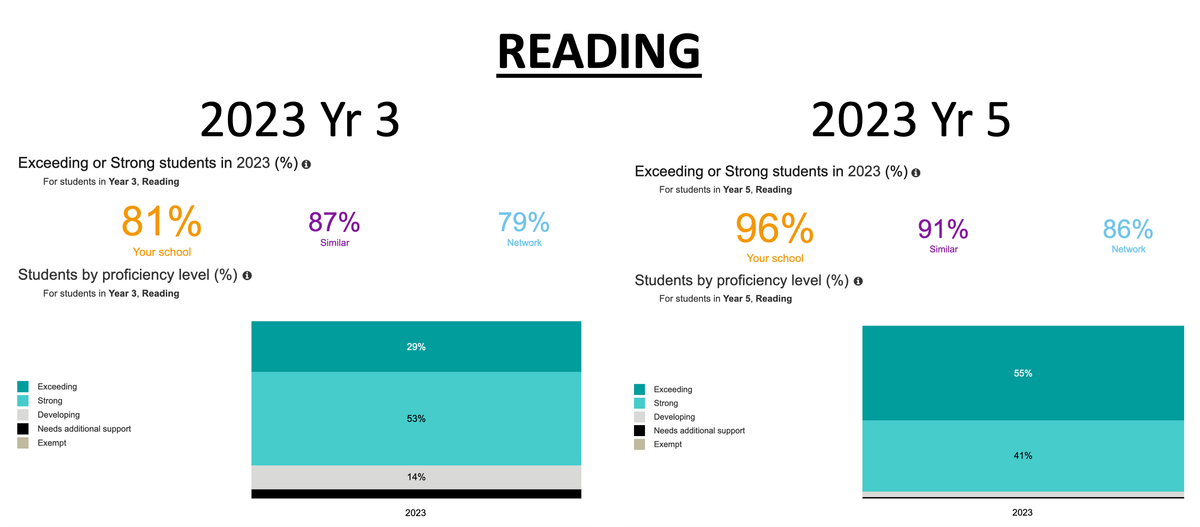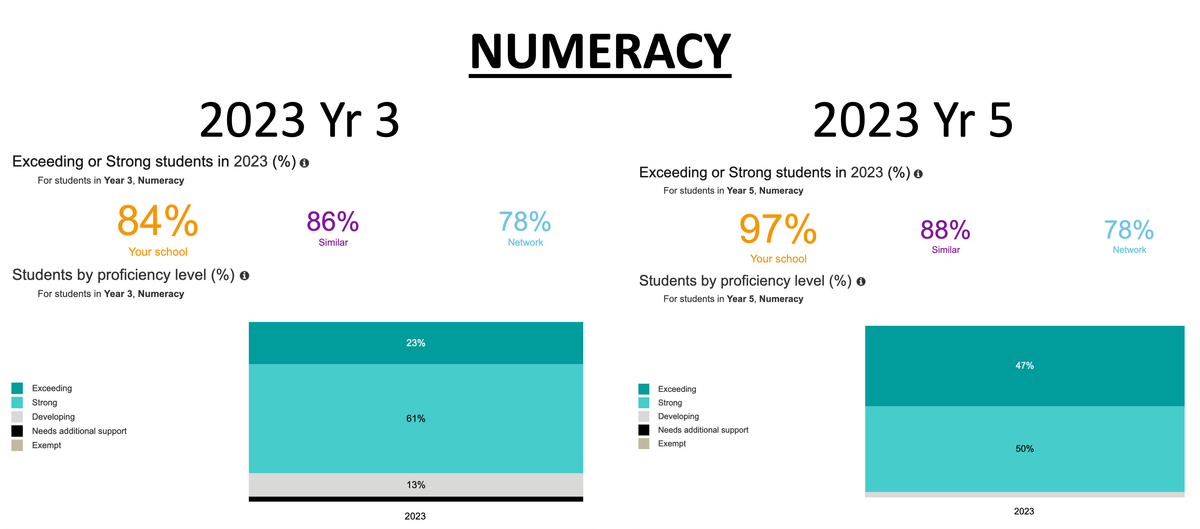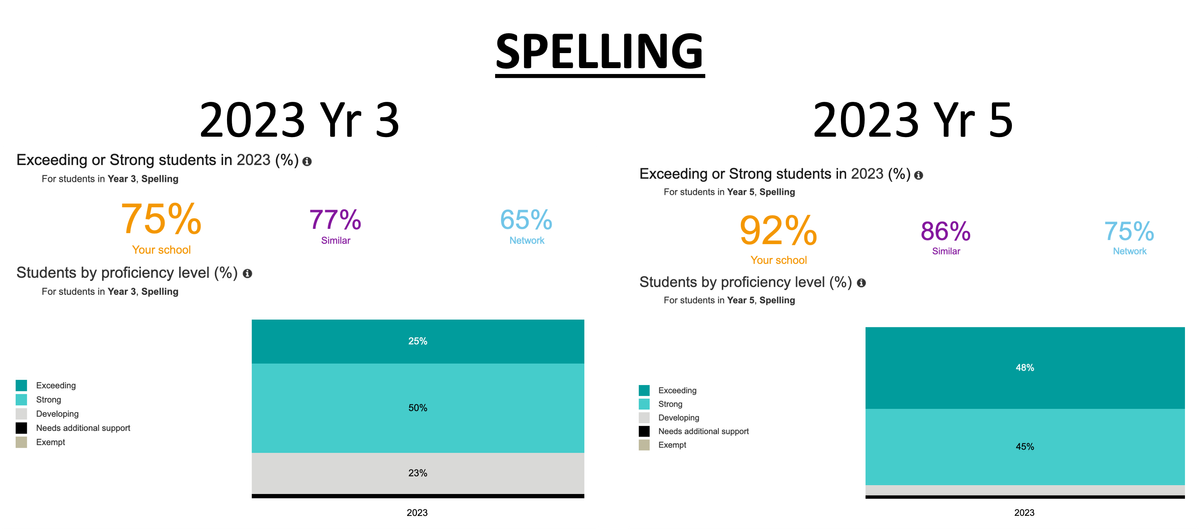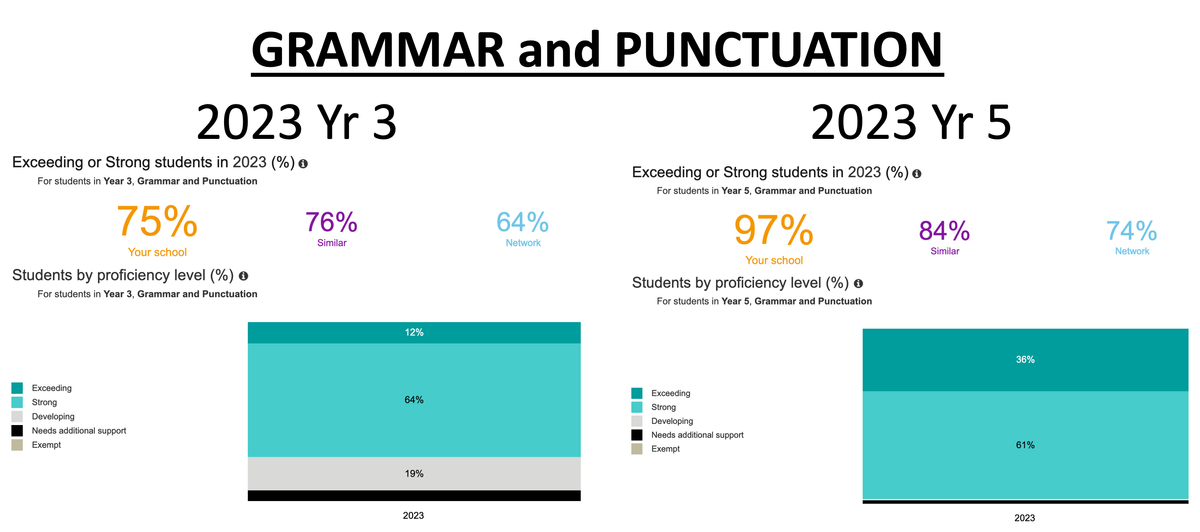2023 NAPLAN REPORT
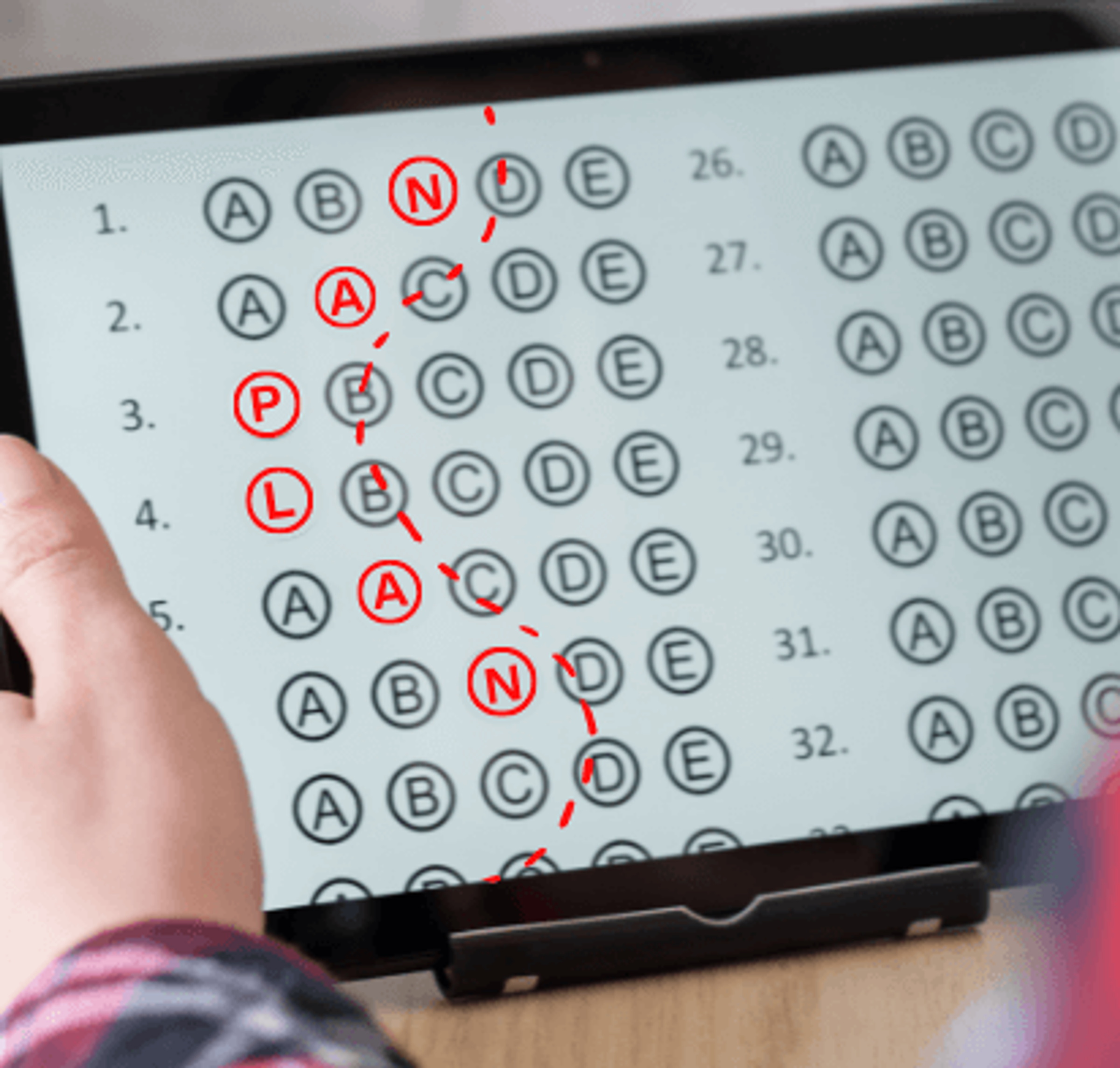
I'm sure by now parents have had a chance to have a look at their child's 2023 NAPLAN results that were distributed to parents of Year 3 and Year 5 students in earlier in term.
Those familiar to student NAPLAN reports may have noticed that while visually it looked similar to previous years, this year there were changes to the banding and language.
Student achievement in NAPLAN is reported using proficiency standards for each assessment area at each year level. The standards are set at a challenging but reasonable expectation of what students know and can do at the time of testing. There are 4 proficiency levels:
- Exceeding: the student’s result exceeds expectations at the time of testing.
- Strong: the student’s result meets challenging but reasonable expectations at the time of testing.
- Developing: the student’s result indicates that they are working towards expectations at the time of testing.
- Needs additional support: the student’s result indicates that they are not achieving the learning outcomes that are expected at the time of testing. At BPS 'additional support' can be in the form of many things already happening in school such as differentiated planning addressing specific needs, targeted teaching of specific concepts, small group intervention, in-school support programs or the tutor learning initiative. It is also important to know that other assessment data may indicate that in fact none of these 'additional supports' are required and the results of NAPLAN may indicate just a 'bad day'. Your child's classroom teacher is best to add clarity for anyone concerned by this.
You'll notice the term 'at the time of testing' is used consistently through these level descriptors and this provides a good reminder that NAPLAN is a measurement of what the student was able to do for this test at this time. It is also worth remembering NAPLAN is expecting children (some as young as 7) to undertake what is essentially a formal assessment exam- something that makes adults anxious. Knowing this, schools will never use the NAPLAN as a definitive assessment tool, instead a range of formal and informal assessment tools are used on an ongoing basis to allow teachers to develop a more comprehensive understanding of student achievement.
As the changes to NAPLAN are new this year, the data so far available to schools is limited and the accurate representation of trends over time, such as relative student growth, aren't comparable to previous years.
This being said, we are tremendously proud of the results presented in the initial information available to schools.
Looking at what went well for our school, our results in all assessment areas and at each level are above the average of our 'Network Schools' for the percentage of students in the Exceeding or Strong proficiency levels. Particular stand-outs include our Year 5s in Numeracy, Spelling and Grammar with figures almost 20% greater than other Network schools.
Compared to 'Similar Schools' (schools that are similar to BPS in terms of student disadvantage, enrollment size, cultural diversity and remoteness) our results also exceed or are comparable these.
Our results in Reading and Writing confirm the programs operating within our classrooms are effective, and with 96% of Year 5 students exceeding or strong in Reading and Writing it is particularly reassuring to see these programs do not lose their effectiveness in the older years.
Results are similar in the areas of Numeracy, which again is reassuring given our strong focus on Numeracy improvement over recent years.
Our Spelling and Grammar results are also worthy of celebration when compared with 'Similar' and 'Network Schools'.
Should you have any questions about your child's achievement, NAPLAN-related or not, making an appointment to discuss these with their classroom teacher is the best way forward.
